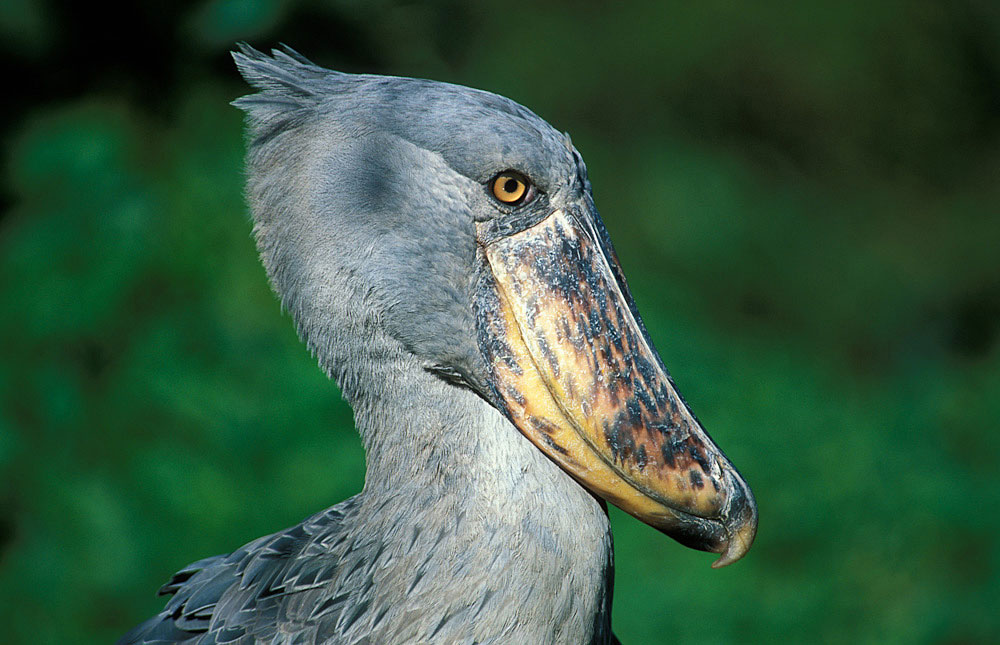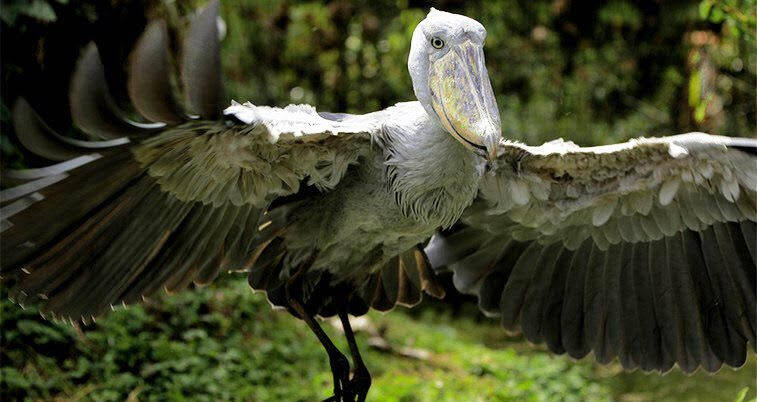
Shoebill makes this loud bill-clattering display to attract a partner although it may sound scary to humans, it sounds attractive to these birds, especially during nesting season. It is very loud and scary that sounds like a hippopotamus calling. This "bill-clattering behavior" is also observed when they are greeting another bird. Shoebills are mostly silent as they wait for their prey, but they produce a strange sound that is not common among birds.ĭuring nesting, the adult shoebill makes awesome machine gun noises, Africa Freak reported. According to Soothing Nature, this fishing technique is called "collapsing," wherein it involves lunging or falling forward to their prey.īut that is not the only amazing thing about them. By the time a lungfish comes up for air, it would be already too late to notice this lethal prehistoric-looking bird. It is important to work to preserve shoebill birds and their habitats so that shoebills can continue thriving in the years to come.Shoebills can stay motionless for many hours so that it will not get noticed by their prey. Shoebills are not particularly harmful to humans and there are no confirmed cases of death due to these birds attacking humans, pets, or livestock. They may look scary and have big, intimidating bills, but those bills are only a cause for concern for fish and some small animals.

Understanding these beautiful shoebill birds is important, and education about these creatures will help in conservation efforts and in preventing the shoebill bird from becoming endangered.

There’s a lot more to learn about shoebills, and this information has really only scratched the surface.
#THE SHOEBILL BIRD HOW TO#
Today, scientists continue to study fossils and information about shoebills to get a better idea of what they are and how to understand them. It wasn’t until over a hundred years later that shoebills were reclassified. Humans have known about shoebills as long ago as ancient Egypt when they are first referred to in written language. They did not receive a classification until the 1800s, however, when they become known to the West and specifically to Europe. The Shoebill stork is Earth’s Last Living Dinosaur? Some scientists also feel that the shoebill is related to herons, and therefore it can also be known as a shoebill crane. The shoebill resembles a stork in its structure and shape, and this is why it is also sometimes referred to as the shoebill stork. The shoebill is very closely related to pelicans, which is why it is sometimes referred to as a shoebill pelican and is classified in the order Pelecaniformes. However, in the past, the shoebill was miscategorized as belonging to the Ciconiiformes order, which includes storks. Shoebills are closely related to pelicans.Are there any animals the shoebill is related to?

Despite the shoebill descending from both of these relatives, it does not have separate types now, and the shoebill doesn’t even come in more than one colour. There is only one type of shoebill, but there are two known prehistoric relatives of this type of bird. The first is called Goliathia and was found in Egypt, and the second is called Paludavis and was also found in Egpyt, but fossilized at a different time period.

14 Days Honeymoon in Tanzania & Zanzibar.9 Days Gorillas In Rwanda & the BIG 5 Tanzania.Lewa Conservancy - Big 5 Safari in Kenya.Murchison Falls NP - Wildlife Safari in Uganda.


 0 kommentar(er)
0 kommentar(er)
